TPP1
-
Official Full Name
tripeptidyl peptidase I -
Overview
This gene encodes a member of the sedolisin family of serine proteases. The protease functions in the lysosome to cleave N-terminal tripeptides from substrates, and has weaker endopeptidase activity. It is synthesized as a catalytically-inactive enzyme which is activated and auto-proteolyzed upon acidification. Mutations in this gene result in late-infantile neuronal ceroid lipofuscinosis, which is associated with the failure to degrade specific neuropeptides and a subunit of ATP synthase in the lysosome. -
Synonyms
TPP1;tripeptidyl peptidase I;ceroid lipofuscinosis, neuronal 2, late infantile (Jansky Bielschowsky disease) , CLN2;tripeptidyl-peptidase 1;TPP I;tripeptidyl aminopeptidase;growth-inhibiting protein 1;cell growth-inhibiting gene 1 protein;lysosoma
Recombinant Proteins
- Human
- Cynomolgus
- Mouse
- Rat
- Zebrafish
- Mammalian Cells
- HEK293
- E.coli
- Insect Cells
- His
- Flag
- Non
- Avi
- Fc
Background
What is TPP1 Protein?
TPP1, or Tripeptidyl Peptidase 1, is in the spotlight for its role as a telomere-protecting protein. Partnering with five core proteins—POT1, TRF1, TRF2, TIN2, and Rap1—it forms a complex named shelterin, crucial for the stability and integrity of telomeres. TPP1 is a key defender of chromosome ends from DNA damage responses, thwarting unwanted DNA repair processes and maintaining the telomere’s 3’ overhang. Additionally, it plays a role in shaping the T-loop structures at the telomere ends, building protective configurations, and regulating telomerase activity, which, in turn, affects telomere DNA synthesis and length. The importance of TPP1 extends beyond safeguarding genetic stability, as its dysfunction is linked with various disorders, including neurodegenerative diseases and cancer.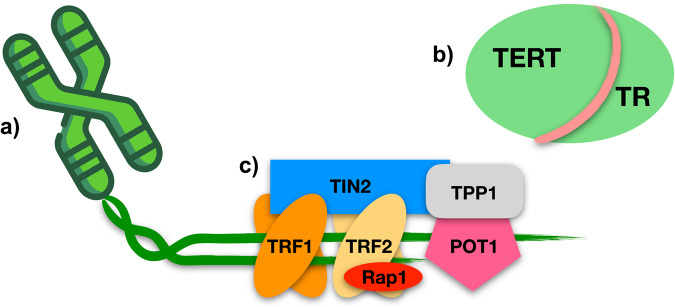
Fig1. Telomeres and the telomeres’ proteome. (Simone Aureli, 2023)
What is the Function of TPP1 Protein?
TPP1, or tripeptidyl peptidase 1, is a vital protein that plays a big role in safeguarding our telomeres. It teams up with five other core proteins—POT1, TRF1, TRF2, TIN2, and Rap1—to form the shelterin complex, which keeps the telomere’s structure and function shipshape. TPP1’s main jobs include shielding chromosome ends from DNA damage, helping shape the T-loop at telomeres, and fine-tuning telomerase activity to assist in telomere DNA synthesis. Moreover, TPP1 is important for drawing telomerase to the telomeres and boosting its activity, critical for maintaining telomeres. Beyond just protecting telomeres, abnormalities in TPP1 are linked to a range of diseases, including neurodegenerative disorders and cancer, making it a significant biomarker and a potential target for treatments.TPP1 Related Signaling Pathway
TPP1 plays a role in various signal pathways, especially those involved in telomere maintenance and cell cycle control. By interacting with other shelterin members, it helps form the T-Loop at telomere ends, build protective structures, and regulate telomerase activity. TPP1 also influences the DNA damage response via the ATM/ATR-p53 pathway, affecting chemotherapy sensitivity. Its TEL patch is crucial for recruiting telomerase, enhancing processivity, and promoting advanced DNA synthesis. In inflammatory responses, TPP1 affects macrophage signaling, the IL12 pathway, and the CLEAR pathway. These roles highlight TPP1’s involvement in genomic stability, DNA damage response, and tumor development, underscoring its complexity and importance beyond just telomere protection.TPP1 Related Diseases
The TPP1 protein is linked with a few specific diseases, notably Neuronal Ceroid Lipofuscinosis (NCL), especially the type known as CLN2. This is a genetic disorder triggered by mutations in the TPP1 gene, which causes a dip in the enzyme’s activity. CLN2 often starts impacting kids early on, affecting both their motor and cognitive development, with symptoms like seizures, rapidly worsening dementia, declining motor skills, loss of vision, and tragically, often leads to early death. On top of that, variations in the TPP1 gene are tied to other health issues like atypical forms of NCL, such as late-infantile NCL, progressive ataxia, and complex hereditary spastic paraplegia. Dysfunction in TPP1 is also linked to lung damage caused by tobacco smoke, potentially playing a role in conditions like COPD and lung fibrosis. So, the ties between TPP1 and these diseases underline its key role in the progression of neurodegenerative and some respiratory disorders.Bioapplications of TPP1
Recombinant TPP1 protein is super important across research, industrial production, and medical fields. In scientific research, it’s used to dig into how TPP1 functions in lysosomes and how proteins break down. On the industrial side, biotech advancements have really ramped up the efficiency and quality of recombinant TPP1 production, just to keep up with what the pharmaceutical industry needs. Moving over to medicine, recombinant TPP1 protein truly shines, especially as a treatment option for Neuronal Ceroid Lipofuscinosis type 2, or CLN2 disease. Brineura, which is cerliponase alfa, made headlines as the first-ever approved drug for treating CLN2. It’s given straight into the brain’s ventricles and has shown promise in slowing down the illness’s progression. This shows the great potential and value of recombinant TPP1 protein in tackling rare diseases.Case Study
Case Study 1: Nandakumar J. et al. Nature. 2012
Human chromosomes end with a protective complex called shelterin, which safeguards them from being mistaken as DNA damage sites and helps regulate telomerase, the enzyme responsible for replicating telomeres. A vital part of shelterin is the POT1-TPP1 duo, which connects to the single-stranded DNA at the telomere’s tip. TPP1 plays a role in pulling telomerase to the telomeres and boosting its activity. Although understanding how these roles work is tricky—largely due to genetic changes affecting TPP1’s protective function—we’ve pinpointed specific mutations in TPP1. These mutations maintain its protective role but disrupt its ability to bind telomerase. The affected area, known as the TEL patch, is crucial for both attracting telomerase and enabling efficient DNA synthesis. This makes the TEL patch a promising target for developing new anticancer drugs.-
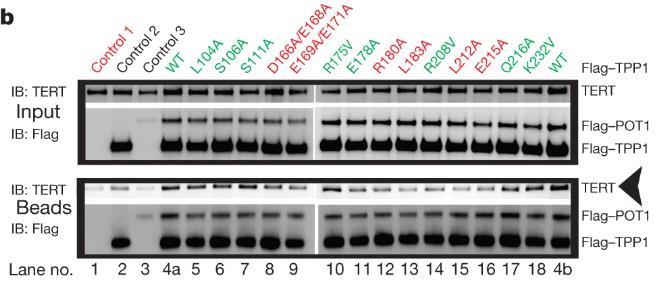 Fig1. Comparison of TERT pull down by Flag–TPP1 mutants in the presence of Flag–POT1 and primer a5. Control 1, Flag–POT1/TPP1 and primer a5 omitted.
Fig1. Comparison of TERT pull down by Flag–TPP1 mutants in the presence of Flag–POT1 and primer a5. Control 1, Flag–POT1/TPP1 and primer a5 omitted. -
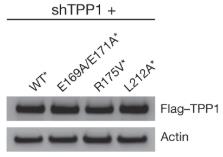 Fig2. Western blot showing similar protein levels of shRNA-resistant Flag–TPP1 in the indicated cell lines also expressing shTPP1.
Fig2. Western blot showing similar protein levels of shRNA-resistant Flag–TPP1 in the indicated cell lines also expressing shTPP1.
Case Study 2: Grill S. et al. Cell Rep. 2018
TPP1 plays a crucial role in telomerase function and telomere integrity through a region known as the TEL patch. This area on TPP1 is vital for recruiting telomerase and ensuring effective telomere lengthening. Additionally, there’s a critical spot in TPP1’s OB domain, called the NOB region, which, while conserved in many mammals, differs in mice. When the human NOB sequence is swapped into mouse TPP1, it can activate human telomerase, highlighting NOB’s role in species-specific TPP1-telomerase interactions. These insights reveal that TPP1’s role in engaging telomerase is more complex than previously thought, emphasizing the importance of both the TEL patch and the NOB region.-
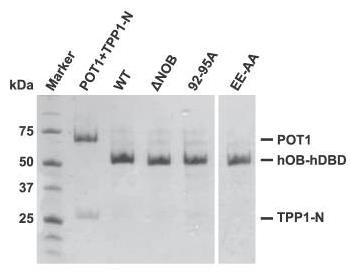 Fig3. Coomassie-blue-stained SDS-PAGE gel of purified POT1/TPP1-N complex and hOB-hDBD fusion proteins.
Fig3. Coomassie-blue-stained SDS-PAGE gel of purified POT1/TPP1-N complex and hOB-hDBD fusion proteins. -
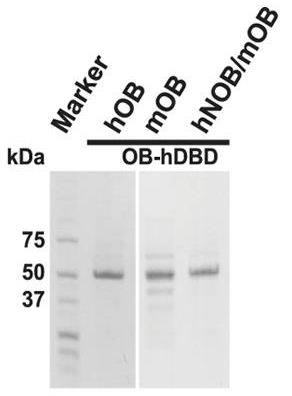 Fig4. Coomassie-blue-stained SDS-PAGE gel of purified OB-hDBD variants containing either hTPP1 OB sequence (hOB), mTPP1 OB sequence (mOB), or mTPP1 OB sequence with site-directed mutations to reconstitute the human TPP1 NOB sequence.
Fig4. Coomassie-blue-stained SDS-PAGE gel of purified OB-hDBD variants containing either hTPP1 OB sequence (hOB), mTPP1 OB sequence (mOB), or mTPP1 OB sequence with site-directed mutations to reconstitute the human TPP1 NOB sequence.
Quality Guarantee
High Purity
-
.jpg) Fig1. SDS-PAGE (TPP1-329H)
Fig1. SDS-PAGE (TPP1-329H)
-
.jpg) Fig2. SDS-PAGE (TPP1-8094H)
Fig2. SDS-PAGE (TPP1-8094H)
Involved Pathway
TPP1 involved in several pathways and played different roles in them. We selected most pathways TPP1 participated on our site, such as IRE1alpha activates chaperones,Lysosome,Metabolism of proteins, which may be useful for your reference. Also, other proteins which involved in the same pathway with TPP1 were listed below. Creative BioMart supplied nearly all the proteins listed, you can search them on our site.
| Pathway Name | Pathway Related Protein |
|---|---|
| Lysosome | CTSJ,HYAL1,CTSSB.2,ASAH1B,SUMF1,DNASE2,AP4M1,CTSF,MCOLN1,PLA2G15 |
| Unfolded Protein Response (UPR) | KLHDC3,DNAJB9,FKBP14,HYOU1,ASNA1,SEC63,PDIA6,C19orf10,CTDSP2,SERP1 |
| Metabolism of proteins | RING1,EXOSC8,ST8SIA3,SLC38A8,EIF5A2,SPCS3,ALG14,ADAMTS20,SLC30A8,DPH3 |
| IRE1alpha activates chaperones | SEC63,WIPI1,HDGF,C19orf10,DNAJB9,HYOU1,CTDSP2,KLHDC3,FKBP14,CXXC1 |
| XBP1(S) activates chaperone genes | WIPI1,KLHDC3,YIF1A,DNAJB9,SEC63,FKBP14,HYOU1,CTDSP2,DDX11,SERP1 |
-
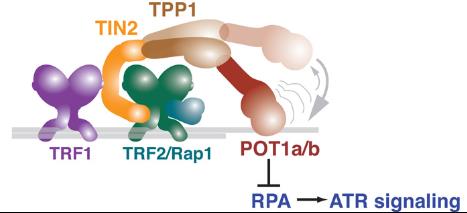 Fig1. Model for RPA exclusion through TIN2-tethered TPP1/POT1. (Kaori K Takai, 2011)
Fig1. Model for RPA exclusion through TIN2-tethered TPP1/POT1. (Kaori K Takai, 2011) -
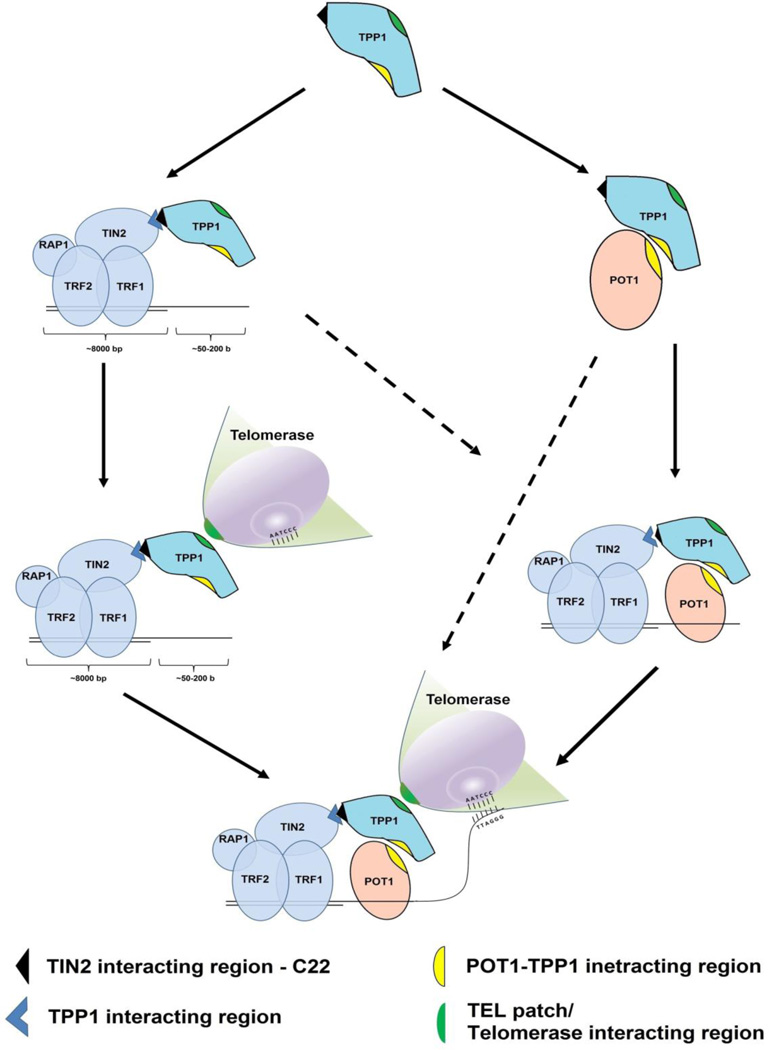 Fig2. Schematic representation of TPP1 and its role in telomere maintenance. (Malligarjunan Rajavel, 2014)
Fig2. Schematic representation of TPP1 and its role in telomere maintenance. (Malligarjunan Rajavel, 2014)
Protein Function
TPP1 has several biochemical functions, for example, endopeptidase activity,metal ion binding,peptidase activity. Some of the functions are cooperated with other proteins, some of the functions could acted by TPP1 itself. We selected most functions TPP1 had, and list some proteins which have the same functions with TPP1. You can find most of the proteins on our site.
| Function | Related Protein |
|---|---|
| protein binding | CYBA,MMP2,GSTO1,ATP6V1E1,FAM151B,ZSCAN16,DNAJB11,RIPPLY2,PLXNB2,LSM4 |
| metal ion binding | EXT1,ZFP609,CYB561D2,ELP3,PPP4C,ATP2B3A,ZFP41,RNF34B,HPDL,ZNF280B |
| endopeptidase activity | HTRA3,ELANE,PSMB9A,PSMB6,PSMB8F,CTSH,PSMA6B,PSMA5,PSMA7,PSMA8 |
| peptidase activity | DHH,PRSS30,CTSBB,CTSM,CAPN1B,PCSK5,ZMPSTE24,PLAUB,MCPT2,FAP |
| serine-type peptidase activity | DPP6B,HTRA1B,KEX2,MCPT9,RBP3,ST14,HGFA,TMPRSS4A,KLK1B24,DPP4 |
| peptide binding | CCKAR,CMA1,PPYR1,LNPEP,GNRHR2,ENPEP,ERAP2,PCSK5,RNPEPL1,CLTA |
| tripeptidyl-peptidase activity | ACE,TPP2 |
| serine-type endopeptidase activity | RHBDD3,CELA2B,FAP,F10,TRY,PROCA,KLK11,PLAUB,CELA1,LONP1 |
Interacting Protein
TPP1 has direct interactions with proteins and molecules. Those interactions were detected by several methods such as yeast two hybrid, co-IP, pull-down and so on. We selected proteins and molecules interacted with TPP1 here. Most of them are supplied by our site. Hope this information will be useful for your research of TPP1.
cya;ubiD;gatA;q7cgu7_yerpe;fliD;q7cig0_yerpe;q7ciq5_yerpe;q7ckk4_yerpe;q81l99_bacan;yitJ;bfmbAb;q81n23_bacan;potD;argE;15-deoxy-delta(12,14;A2M;MYC;cona_canen;HTT;CCDC88A
Resources
Related Services
Related Products
References


